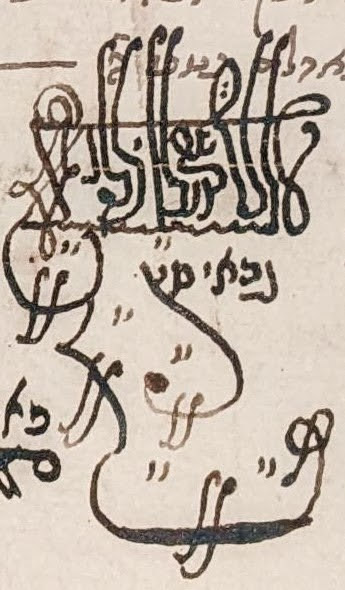After cataloging enough documents and manuscripts with tuǧras of fascinating dimensions, drawings, and levels of design, I realized that a post showing the great and unique Jewish tuǧras was called for.
Tuǧras, as explained by The Getty Art and Architechture Thesaurus, “[…] were used as authentication on documents, because the Ottoman sultans did not sign their decrees. The tuǧras were drawn by specially designated high officials with the rank of pasha, who checked the copy for accuracy. In form, the tuǧra is distinguished by three high verticals and one large elliptical curve extending to the left and enclosing a smaller, similar curve”.
However, there is a specific Jewish and rabbinic tradition of tuǧras, and as more North African, Turkish, and Middle Eastern Judaic manuscripts have passed over my desk, I have been amazed at the array of Hebrew tuǧras which I have seen. The profuse usage of the tuǧra by rabbis and prominent Jews is a witness to the widespread practice of Jewish tuǧra, in lieu of a rabbinic seal (often used by rabbis in Europe); these unique, often pictographical creative combinations of letter-symbols of the creator’s complete names result in the many recognizable symbols and creations. Perhaps some will see musical notes, others sailboats, some perhaps grand buildings of Islamic and Turkish architechture.
Enjoy a selection of Jewish tuǧras recently cataloged on manuscripts in the Penn Libraries.



UPenn CAJS Rar Ms 595 is a condolence letter written by members of the Yeshivat Keneset Yiśraʼel in Jerusalem to the family of Emmanuel Ergas in Livorno, Italy, who was a supporter of the yeshivah, and contains an array of important tuǧras.











A final manuscript with tuǧras is a large edict issued by the Istanbul rabbinate invalidating the mikveh (Jewish ritual bath) in Plovdiv, Bulgaria, December 1866 (now CAJS Rar Ms 663).








Note : by searching the Franklin Catalog for keyword “tuǧras” and limiting the search to Hebrew and Judeo-Arabic, one will be able to view the records for all of the Jewish tuǧra manuscripts I’ve cataloged.

